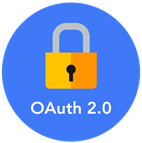
PowerBuilder 2017 R2, released in January 2018, added TLS 1.2 support in the new HTTP Client and RESTful Client components. Both objects have a property named SecureProtocol that can be set to a value of five (5) to ensure only TLS 1.2 protocol is utilized. TLS 1.2 takes advantage of the use of the higher SHA-256 encryption standard and the client and server’s ability to specify the accepted hash and signature algorithms. TLS 1.2 also supports authenticated encryption, TLS extensions, and AES cipher suites.
PowerBuilder 2017 R3, released in July 2018, upgrades PowerBuilder to support the new OAuth 2.0 specification – often just commonly referred to as OAuth2. With the inclusion of OAuth2 features, application developers and their resulting applications can take advantage of the security features of OAuth2. Before the average developer utilizes the new OAuth2 features of PowerBuilder, it helps if you understand the concepts behind the OAuth2 implementation.
OAuth2 is an authorization framework that enables applications to obtain limited access to user accounts on an HTTP service. Many popular third-party HTTP services use OAuth2, such as GitHub, Google, Facebook, etc. – just to name a few. OAuth2 works by delegating user authentication to the service that hosts the user account and authorizing third-party applications to access that user account. The OAuth2 system provides authorization flows for web, mobile and desktop applications. It does this by using four OAuth2 roles, which are: Resource Owner, Client, Resource Server and Authorization Server. The OAuth2 framework defines these roles as:
Resource Owner is the user who authorizes an application to access their account.Resource Server is the server hosting protected data (for example Google hosting your profile and personal information).Client is any application requesting access to a resource server. Before it may do so though, it must be authorized by the user, and the authorization must be validated.Authorization Server is a server issuing access token to the client. This token will be used for the client to request the resource server. This server can be the same as the authorization server (same physical server and same application) as this is often the case.
High Level Flow


